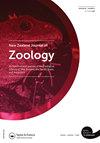在对1080毒物(氟乙酸钠)表示关切的情况下,新西兰防治哺乳动物病虫害的替代品
IF 1.1
4区 生物学
Q3 ZOOLOGY
引用次数: 2
摘要
正在进行的使用1080毒素控制哺乳动物害虫在新西兰仍然高度争议。过去25年的几次审查确定了社会和科学方面的信息差距和令人关切的领域。本文讨论了这些关注的领域,并回顾了为澄清和解决这些问题而进行的广泛的科学和社会研究。虽然国家在研究方面进行了重大投资,目的是寻找1080的替代品,但由于替代品的效力低或不一致和/或成本效益低,管制方面难以获得批准空中运送任何替代品,以及有毒残留物问题,这一目标尚未完全实现。寻找一种具有类似功效的替代品,同时满足物种选择性、无残留和人性化的要求,是一项持续的挑战。最有希望的前景似乎是通过了解目标动物的基因组和基因操作的机会,要么通过基于基因组挖掘开发物种特异性设计致命毒物,要么通过基因编辑开发非致命技术。两者都需要大量的研究时间和资金,需要大量的努力和参与来解决社会和监管障碍。本文章由计算机程序翻译,如有差异,请以英文原文为准。
Alternatives for mammal pest control in New Zealand in the context of concerns about 1080 toxicant (sodium fluoroacetate)
ABSTRACT The ongoing use of 1080 toxin for the control of mammal pests in New Zealand remains highly contentious. Several reviews over the last 25 years identified information gaps and areas of concern, both social and scientific. In this paper these areas of concern are discussed and the extensive scientific and social research that has been undertaken to clarify and address them is reviewed. Although there has been a major national investment in research aimed at finding an alternative to 1080, that has not yet been fully achieved because of low or inconsistent efficacy and/or low cost-effectiveness of alternatives, regulatory difficulties in obtaining approval for aerial delivery of any alternative, and toxic residue concerns. Finding an alternative that has similar efficacy while satisfying the demands for species-selectivity, no residues, and humaneness is a continuing challenge. The most promising prospect appears to be through understanding the genome of the target animals and opportunities for genetic manipulation, either by developing species-specific designer lethal toxicants based on genome mining, or by gene editing to develop non-lethal technologies. Both will require considerable time and funding for research, and considerable effort and engagement to address social and regulatory hurdles.
求助全文
通过发布文献求助,成功后即可免费获取论文全文。
去求助
来源期刊
CiteScore
2.80
自引率
0.00%
发文量
20
审稿时长
>12 weeks
期刊介绍:
Aims: The diversity of the fauna of the southern continents and oceans is of worldwide interest to researchers in universities, museums, and other centres. The New Zealand Journal of Zoology plays an important role in disseminating information on field-based, experimental, and theoretical research on the zoology of the region.

 求助内容:
求助内容: 应助结果提醒方式:
应助结果提醒方式:


